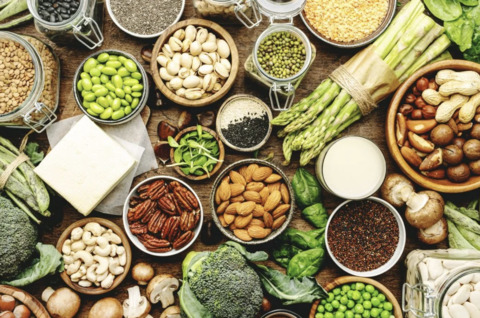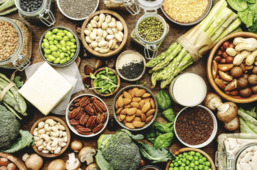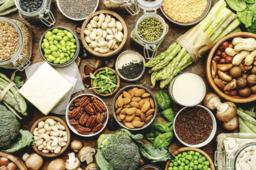
Does the word fiber just make you think of old TV commercials talking about being regular? Fiber might not get the same attention as protein or vitamins, but it’s one of the most important nutrients for your overall health. Fiber is found naturally in fruits, vegetables, whole grains, and legumes. It is a type of carbohydrate that your body can’t digest. Instead of being broken down like other nutrients, it moves through your digestive system, keeping things running smoothly and supporting a wide range of health benefits, everything from better digestion to improved heart health to even weight loss.
Why Is Fiber Important?
A diet rich in fiber supports healthy digestion by preventing constipation and promoting regular bowel movements. It helps maintain a healthy gut, reduces inflammation, and lowers your risk of developing digestive issues like diverticulosis and hemorrhoids. But fiber’s benefits go far beyond digestion. Fiber also helps stabilize blood sugar, lower cholesterol, and support long-term heart health. In fact, studies show that people who eat high-fiber diets have a lower risk of heart disease, stroke, and certain types of cancer.
Unfortunately, most people don’t get nearly enough fiber. Modern diets are heavy on processed foods, which often strip out the fiber our bodies need. Adults should aim for about 25–35 grams per day, but many only get half that. The good news? It’s really easy to increase your fiber intake with a few simple swaps and added habits to your daily routine.
Fiber and Weight Management
One of fiber’s secret superpowers is how it supports weight loss and weight control. Because it’s indigestible, fiber adds bulk without adding calories. It slows digestion and keeps you feeling full longer, which naturally helps you eat less. High-fiber diets are linked to lower rates of obesity and metabolic syndrome, which are two key risk factors for type 2 diabetes and heart disease. Fiber also helps to balance blood sugar, preventing the spikes and crashes that can lead to cravings and overeating.
Fiber and Your Heart
A fiber-rich diet is one of the easiest ways to protect your heart. Soluble fiber, found in foods like oats, beans, and apples, helps lower LDL (bad) cholesterol levels by binding to it and carrying it out of the body. Fiber also helps regulate blood pressure and blood sugar, two factors that play a major role in cardiovascular health. And since fiber promotes satiety, which can help with weight control, it further reduces heart disease risk.
Fiber Promotes Healthy Digestion and Keeps Everything Moving
Constipation is uncomfortable, but fiber is one of the simplest and most effective solutions. It adds bulk to stool, making it softer and easier to pass. It also stimulates the muscles in your intestines to keep things moving. Both soluble and insoluble fiber work together to maintain a balanced digestive system.
A regular intake of fiber in your diet not only prevents constipation but also supports the growth of healthy gut bacteria. A healthy gut is home to trillions of beneficial bacteria that play a major role in digestion, immunity, and even mood regulation. These microbes help break down food, absorb nutrients, and protect against harmful bacteria. When your gut bacteria are balanced, your body just runs more smoothly. Eating plenty of fiber-rich foods helps feed these good bacteria, keeping your digestive system (and you) in better shape
Easy Ways to Add More Fiber to Your Day
1. Choose Whole Grains with Every Meal
Whole grains such as oatmeal, brown rice, quinoa, and whole-grain bread are excellent sources of fiber. They keep you full longer, steady your energy levels, and provide essential nutrients like iron, magnesium, and B vitamins. Starting your day with a bowl of oatmeal or swapping white rice for brown are small changes that can have big effects on your health.
2. Snack Smart with Fiber-Rich Options (like Apples and Peanut Butter)
Snacks are a perfect opportunity to sneak in more fiber. Fresh fruit paired with a bit of healthy fat—like apples with peanut butter or carrots with hummus—keeps you full between meals while stabilizing blood sugar. Other good options include popcorn, whole-grain crackers, or a handful of nuts.
3. Eat at Least 5 Servings of Fruits and Vegetables Daily
Fruits and vegetables are some of the best sources of fiber. Aim for a colorful variety—berries, leafy greens, carrots, and legumes each provide different types of fiber and nutrients. Getting at least five servings a day supports digestion, boosts your immune system, and protects against chronic conditions like diabetes and heart disease.
4. Drink Plenty of Water
Fiber and water work hand in hand. Fiber absorbs water as it moves through your digestive system, so staying hydrated helps prevent bloating and constipation. Aim to drink throughout the day, not just when you’re thirsty, to keep your digestion running smoothly.
5. Add Beans, Lentils, Nuts, and Seeds to Your Meals
Legumes and seeds are full of fiber. Add lentils to soups, toss chickpeas on salads, or sprinkle chia or flaxseeds into smoothies or yogurt. These foods also contain plant-based proteins, healthy fats, and minerals, making them some of the most nutrient-dense choices you can make.
Fiber FAQ
1. How much fiber do I need each day?
Most adults should aim for 25–35 grams per day. Women generally need around 25 grams, while men need closer to 30–35. Remember to start slow, adding in too much too fast can cause discomfort and constipation.
2. What’s the difference between soluble and insoluble fiber?
Soluble fiber dissolves in water and helps lower cholesterol and blood sugar. Insoluble fiber doesn’t dissolve, it adds bulk to your stool and helps prevent constipation. Both types are important for good health.
3. Can I take fiber supplements instead of eating fiber-rich foods?
Supplements can help if you’re struggling to meet your daily goal, but they shouldn’t replace whole foods. Whole foods offer vitamins, minerals, and antioxidants that supplements don’t provide.
4. Can eating too much fiber cause problems?
It’s possible, especially if you increase your intake too quickly. You might experience bloating or gas. To avoid that, add fiber gradually and drink plenty of water.
5. What are some easy ways to add more fiber to my diet?
Start your day with oatmeal, add beans or lentils to meals, snack on fruit, swap refined grains for whole ones, and include vegetables with every meal. Small changes lead to big improvements over time.

Conclusion: More Fiber!
Fiber is one of the easiest ways to boost your health naturally. It improves digestion, lowers cholesterol, helps manage weight, and protects against major diseases. Incorporating more fiber-rich foods doesn’t mean giving up flavor, it means choosing real, wholesome ingredients that keep your body feeling good. Start small: swap white bread for whole grain, add vegetables to every meal, and reach for fruit instead of processed snacks. Over time, your body, your gut, and even your mind will thank you.
Related posts




